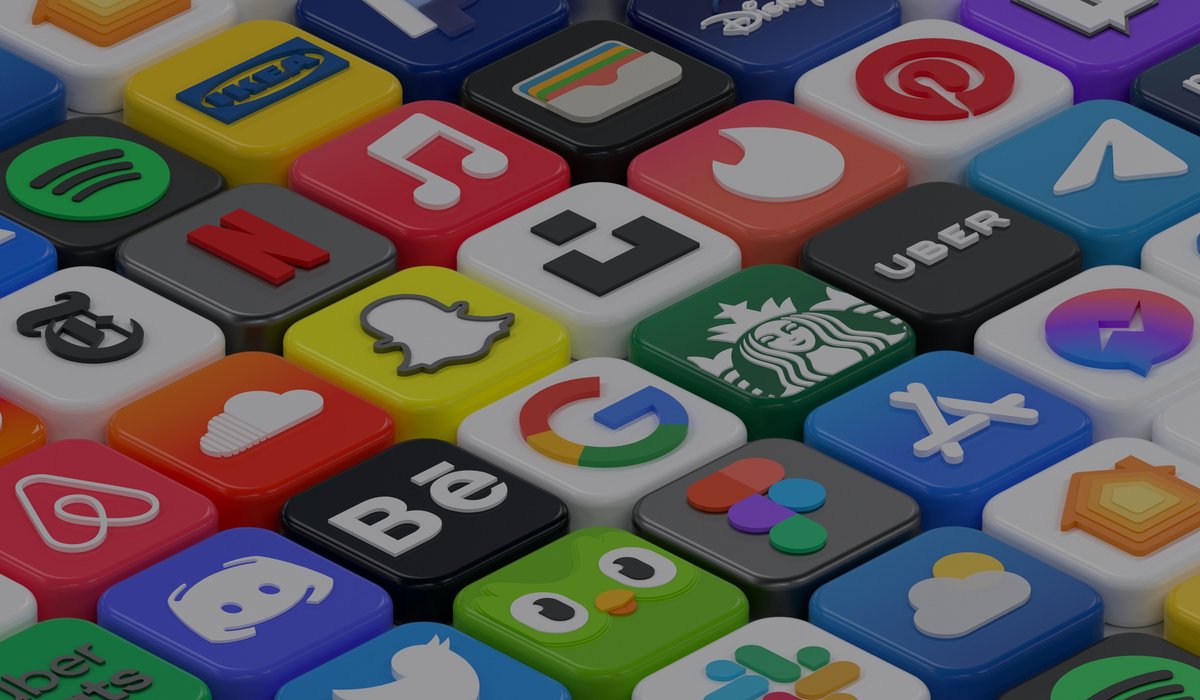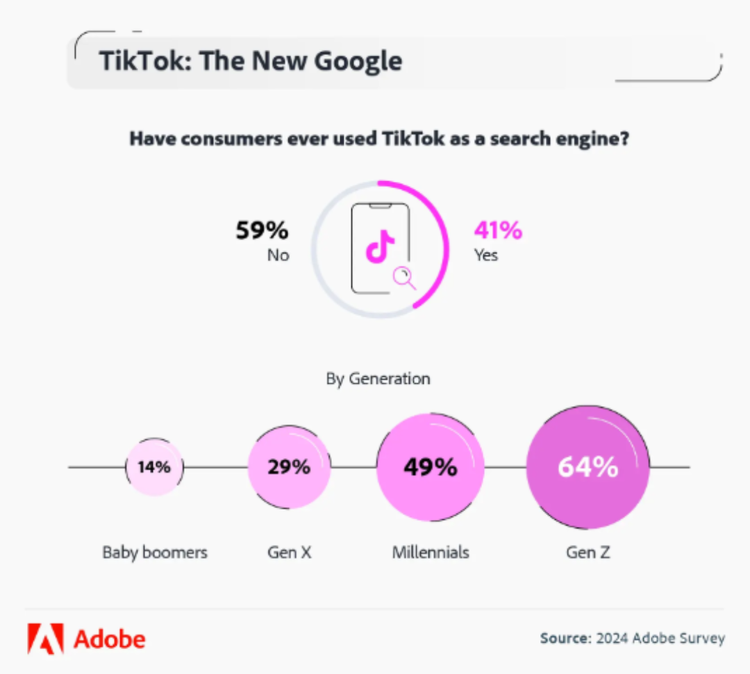We launch webinar series for aspiring creatives

This month, we’re delighted to launch a series of free weekly webinars geared towards those seeking…

Gen Z know exactly what they want from social media, only engaging with brands that demonstrate genuine values, create real community connections, and interact with their audience rather than just advertising to them. Here are some things brands can do to successfully engage with these new rules, from a Gen Z perspective.
As a 23-year-old who's been chronically online since high school, I've watched social media evolve from basic Facebook posts about “what I had for lunch” to the complex world it is today. My generation - Gen Z - didn't have to adapt to social media but we did adapt how we interact with it. And honestly, it feels like most brands still don't get how we actually use these platforms.
Here's the reality - I spend over three hours a day on social media [note from the social team: Ha! These are rookie numbers!], and so do most of my friends. That's not necessarily because we're addicted (okay, maybe a tad), it's because social media isn't separate from our lives anymore. It's where we get our news, discover new products, stay connected with friends, and where we do most of our shopping research.
81% of people my age spend at least an hour daily scrolling, and that number keeps growing. We're not just passive consumers either. The internet used to be a small place in the corner of a cafe, where people would just log on and escape for a bit then go back to the ‘real world’ but now it is everywhere, it has integrated into our daily lives beyond the point of return.

Brands need to understand that we're navigating a world dominated by TikTok's polished relatability and fast-paced virality culture, where "authenticity" feels strategic and oversharing feels performative. Most of my generation know exactly how the social media machine works because we helped to reshape and reject some of the rules of social media that were established by Millennials. Having been marketed to online since we were kids, most of us are switched-on consumers who can spot old-school marketing tactics from a mile away.
Although we entered adulthood during economic turmoil, COVID, and widespread burnout, we’re a generation that's deeply realistic but still hopeful. We're not cynical, we're strategic and we want brands that acknowledge our reality while still inspiring us.
Most importantly for marketers, we're the first generation to truly experience adolescence completely in public. We grew up as Instagram, Tumblr, and Vine exploded, learning digital identity-building through trial and error before anyone taught us the rules. This trial-by-fire experience made us prematurely wise about online personas, hyper-aware of manipulation tactics, and incredibly cautious about who we trust. When we engage with brands, we're bringing all of that experience to every interaction.
TikTok is where I discover almost everything now. 77% of us use it for shopping inspiration, and 63% for news, which probably horrifies older generations, but it works for us. If I have a question, want to find a tutorial, discover something, style inspiration - the list goes on - then I will turn to TikTok before Google. The algorithm knows me better than I know myself sometimes. When I see a product review on TikTok from someone who feels authentic, I'm way more likely to trust it than any traditional ad. A feeling of belonging built by relatable creators fosters a sense of trust, which is something my generation craves.

On TikToK we're creators, curators, and critics all at once. When I see something I like on TikTok, I'm not just watching, I'm deciding whether to buy it, share it, or create my own version. It is the powerhub for fast trends, a quick fix and a ‘doom scroll’, and with attention spans rapidly deteriorating, brands need to act fast if they want to hook our generation.
Instagram's still relevant though, especially for lifestyle content and staying connected with people I actually know but the content that works there has changed completely. We want behind-the-scenes stuff, unfiltered moments, relatable mess which makes us feel seen and real stories, not the perfectly curated feeds that defined Instagram a few years ago.
Image source: Adobe.com
This is where brands mess up the most. We grew up with advertising everywhere from the traditional OOH or TV to online, so we've developed incredible BS detectors. When a brand tries too hard to be relatable or jumps on a trend they clearly don't understand, it's painfully obvious. I've seen brands try to use slang we stopped using two years ago, or just completely miss the mark and it's just... no. Brands that stay true to the age-old tenet of marketing of knowing who they are and knowing who their audience is, understanding the values and adapting that to their use of social media trends really makes all the difference .
What actually works? Digital word of mouth through user-generated content from real people. When someone I follow genuinely loves a product and shows how they use it in their daily life, that's gold. When a brand reposts that content and engages authentically with their community, that builds trust which creates loyal consumers and a community within that.
Brand values matter to our generation more than they might’ve done previously. We expect brands to have values and act on them. I'm not going to support a company that claims to care about sustainability but doesn't change any of their practices. We research everything, and we'll call out performative activism in a heartbeat.
48% of us plan to buy more through social media this year, but only from brands that feel genuine. We want to see the people behind the brand, understand their values, and feel like they actually care about their impact on the world.
Some examples of brands that are doing this right are Dove and Patagonia.
For over 20 years, Dove has consistently challenged traditional beauty standards and consistently promotes realistic body image and self-esteem through its inspiring "Real Beauty" campaign, featuring diverse people. They back this with educational programs aimed at boosting self-esteem in young people, demonstrating a genuine commitment beyond just advertising.
When it comes to sustainability, Patagonia isn't just talking about it, it's a core part of their business model. Using recycled materials, offering repairs, donating profits to environmental causes, and actively promoting conscious consumption, their actions consistently align with their stated values. They've been transparent about their supply chain and challenges, which builds trust.
An example of a brand who really missed the mark is Pepsi.
In 2017, Pepsi released an ad featuring Kendall Jenner joining a protest and resolving tensions by handing a police officer a can of Pepsi. The ad was widely criticised for downplaying serious social and political movements, particularly Black Lives Matter. It was seen as a tone-deaf attempt to associate the brand with activism without understanding the real struggles or contributing to meaningful change. Many people thought it felt inauthentic and exploitative.
Unlike my parents' generation, I actually want brands to interact with me directly. If I comment on a post or ask a question, I expect a real response, not a copy-paste reply. The brands I'm loyal to are the ones that feel like they're part of our community, not just advertising to us. We want to feel SEEN and not just another number on the list of purchases.
A brand who has hit the nail on the head with this is Duolingo, innovatively using its quirky green owl mascot, Duo, to communicate and engage directly with followers on TikTok and X (formerly Twitter). They respond to comments with funny, often self-deprecating, and highly relevant replies that nod to internet memes and trends. This follows through in their content as well where they lean into the memes and jokes to create viral moments. The Duo Death stunt created the kind of virality most can only dream of.
The cumulative effect of responses that feel genuine and personalised, understanding internet culture and speaking their audience's language means they have built a strong, loyal community around their brand’s personality. Duo as a mascot has become almost a living entity that's part of the community, not just an advertising tool.
Social media for my generation isn't just about entertainment or staying connected, it's where we live our digital lives. Brands that understand this and show up authentically, consistently, and with genuine care for their community will win. Those that don't will just become background noise we scroll past without a second thought. We're not just the future of consumers, we're the present, and we're waiting for a lot of brands to catch up.
Marketing is obsessed with generations and pigeonholing customers - both existing and potential - into neatly packaged boxes. But the things that resonate with today’s 20-somethings are the things that have always resonated with each generation of 20-somethings. Tried and tested tactics of word of mouth, building meaningful relationships with your customers, and creating community were the same in 1955 as they are in 2025. Where changes have happened is in our overexposure to brands, how we scrutinise their values, and how those values shape our purchasing decisions.
Speaking in generational terms as an Elder Millennial, those values I held at 23 stay true now I’m 43 and the brands I’ve stuck with over the years have reflected and acted on those values before and since social media started. Sure, the delivery might have changed depending on which era of social you look at, but the major difference this time is brands are more visible and exposed than ever before, so any misstep is magnified and shared before you can get ahead of it. And the online world does not forget when you mess up.
Want some advice on getting social right for your brand? We can help you create the right strategies and content for every generation.
Get in touch